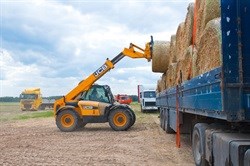Whatever the economic conditions are, doing well in agriculture always comes down to finding a balance - and constantly refreshing the approach to your operation.
This is according to Nico Groenewald, Head of Agribusiness at Standard Bank, who says that while 2014 has been a zero growth year for the South African economy, there are still opportunities for local primary producers and agribusinesses to prosper.
"Farmers are some of the world's most adaptable business people because agriculture confronts more variables than most other industries, including increasingly unpredictable weather patterns.
"For instance, farmers know that when the rand is weak, they will do well with exports, but will pay more for imported inputs and equipment. The opposite applies when the rand is strong.
Agility will be particularly important in 2015
"Either way, you must adjust your operations. Agility will be particularly important in 2015 and beyond, because new opportunities wrapped up in entirely new challenges are about to present themselves."
While most of South Africa's 35,000 commercial farmers make astute use of technology and modern processes and systems, (resulting this year, for instance, in the highest maize yield the country has had for 30 years) growing market insistence on green approaches and green outputs will require reassessment of many operations.
"Supermarkets and people in middle and upper income brackets want to know what goes into food and are beginning to define the environmental and health impact they want farm production processes to have," says Groenewald. "Herbicides, pesticides, fertilizers, and genetically modified seeds are coming under scrutiny. Legislation and packaging will be influenced."
"That said, the green impetus will drive greater awareness of sustainability in farming practices, including improved water and energy management, and also open up new markets. The bio-fuels industry, for example, will create demand for maize and sorghum that did not exist before. If you are alert to the trends, you can grab market share early."
Understandings reached and stakeholder recommendations made during 2014 in relation to land reform issues should also stabilise the environment for primary producers and provide both the motivation and the means for job creation and improved labour relations within the sector.
"In addition, there are significant opportunities for all stakeholders in the agri-processing side of the sector," says Groenewald. "It has long been our belief at Standard Bank that farmers can increase their share of the consumers' wallet by participating in downstream activities. It would also benefit the economy overall if we could reduce our reliance on imported beneficiated products by making them at home. And, of course, local processing reduces each farmer's and the country's carbon footprint."
Agriculture is well positioned to take advantage of new production and market options, having outperformed the economy with almost five percent growth during 2014. To some extent, this is attributable to the fact that, even in economic downturns, people still need to eat.
However, certain sub-segments of the sector have experienced strong growth in their own right. Maize's bumper crop is a result of maize farmers succeeding in producing five tons per hectare versus the three tons previously possible.
The swings and roundabouts effect
"Again, the swings and roundabouts effect in agriculture comes into play because, although the price for maize has softened this year, (reducing profits even though the yield has been better) the lower price has brought relief to livestock farmers whose costs for feedstock have gone down accordingly," says Groenewald.
The dairy sub-segment has benefited from this along with an increase in price, growing by 15%.
While net farm income throughout agriculture has been under pressure from rising fuel, energy, and labour costs, gross farm income has been on a continuously upward trend.
The best performers in terms of gross farm income have been animal products, where wool and mohair were the top two, and horticulture, where tea and citrus did best. The outlook for fresh fruit including citrus for 2015 is good because of good weather conditions, thus far. Although producers will have to contend with the European Union's concern about black spot during the 2014 season, and the possible effects of the Russian ban on EU Fruit to global fruit markets.
Among the fuel crops, sorghum and dry beans had year on year growth of 55 percent. Soya and canola also saw significant growth.
"There is no doubt that it is more difficult to grow in slow economies, but it is certainly not impossible," says Groenewald.



















































